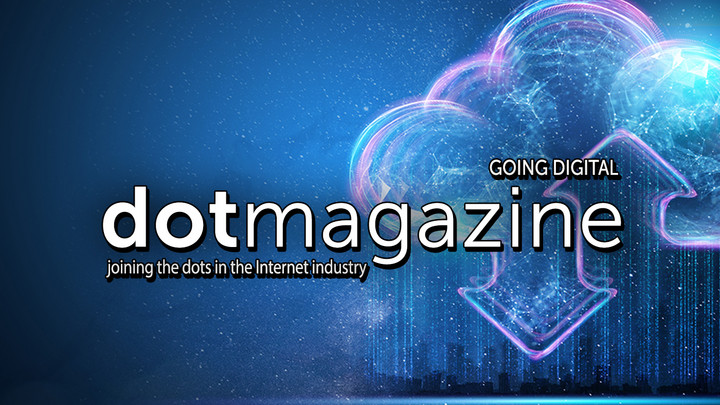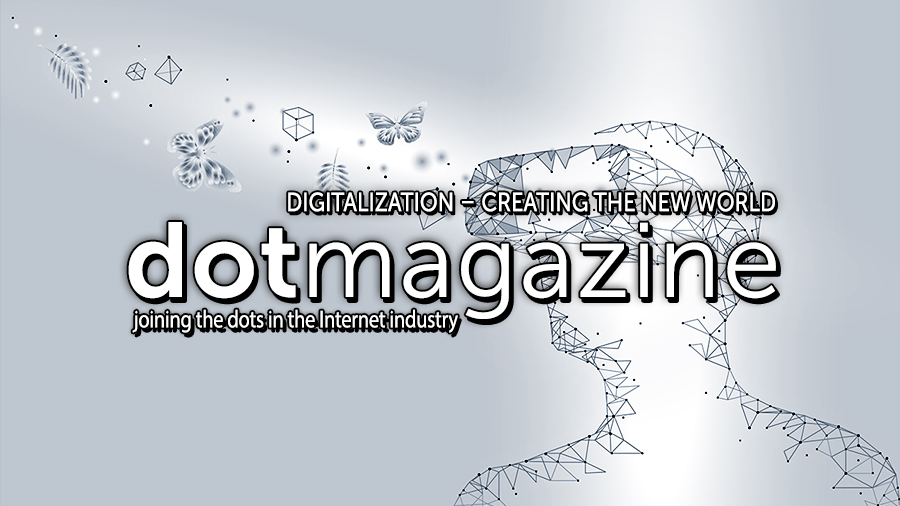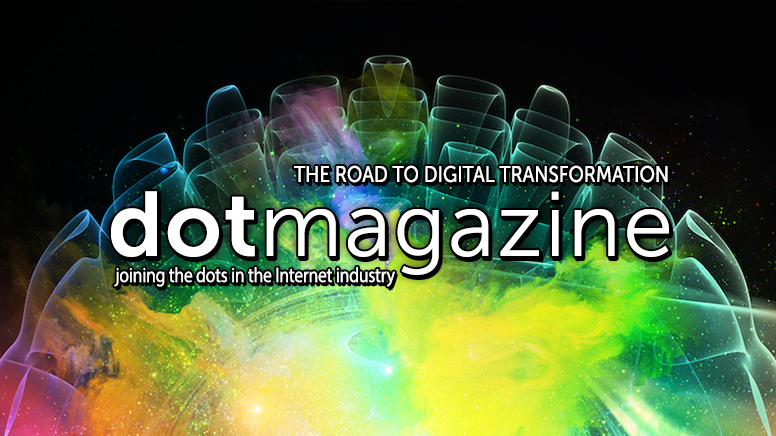The Engine and Drivers of Digital Transformation – doteditorial
Andreas Weiss from the eco Association looks at how to develop a digital strategy and how to make the most of AI in developing new digital business models.

© MARHARYTA MARKO | istockphoto.com
The speed of digital transformation can be measured according to the evolving narrative of technological disruption. Not that long ago, the cloud was still a major focus of this story, but today, it has become so run-of-the mill that it no longer tends to take center stage. The fact that each and every one of us uses cloud services on a daily or even hourly basis leads us perhaps to ignore the transformative power of the cloud as the engine of digitalization.
Following on from the cloud, the narrative turned to the Internet of Things and all of its exciting potential – forgetting that IoT would not be possible without the cloud (not to mention the underlying digital infrastructure up to the edge) as a foundation.
Now the story has taken yet another direction, with the increasingly mainstream usage of artificial intelligence – a disruptive technology that, again, would not have become possible without the combined forces of the data collected by the Internet of Things and the cloud as enabling technologies.
And so we find ourselves, with lightning speed, in today’s world. Digital transformation is well and truly upon us. For some businesses – especially small and medium-sized businesses without the budget for major R&D projects – this brave new world can be both intimidating and an existential threat: it’s no longer a question of if and when we will digitalize our systems and processes, but more how and what we have to do to stay abreast of the transformation.
To answer these questions, it is necessary to build a solid digital strategy which incorporates current trend topics like AI and IoT, but also the foundational elements like cloud services and digital infrastructures.
But how can companies narrow down which types of AI services could be incorporated into their services and strategy?
Developing a digital strategy
When we look at AI as it is today, it is necessary to identify those areas which really show an impact on business. The investment needed and the risks are too high to simply take AI for a test-run to understand how it works, and try to identify what, if any, advantages it offers. Regardless of whether we’re talking about chatbots, predictive maintenance, or any kind of machine learning and deep learning approaches, it’s not possible to isolate this as a simple six-month project to evaluate whether it could help the business or not.
This means it’s important to already have a clear vision of where using AI can represent a real advantage to your business.
Of course, you need to learn how to use these technologies, but you need a clear strategy about where you want to go, and you need to already have some indicators for whether it can really help. You need also to establish a strategy on how to train the AI with a carefully selected set of data, how to find a reasonable strategy in terms of data science in order to learn from the data, and then how to isolate the potential key findings to move the business forward in the direction of new digital business models.
To support businesses in this transition and process, the eco Association has taken on the task of searching for some relevant examples and developing a model for where the business impact is most tangible. And these examples need to be provided per sector. This is what we are aiming with in our forthcoming study, together with Arthur D. Little, on the business potential of current artificial intelligence technologies and concepts, coming out later this year during our eco Congress in Cologne on November 21, 2019.
Of course, a digital strategy is about more than just an approach to AI. As this issue of dotmagazine illustrates, there are a wide variety of topics needing consideration. First and foremost comes the need to transition from a bricks and mortar business to a digital business (see the interview with Saskia Steinacker, Global Head of Digital Transformation at Bayer). Ensuring that management and employees are involved in change management is one essential factor to this transition, but so too is dealing with security and data protection compliance (see the article by Stefanie Köhl and Heidrun Müller from eGovCD, “GDPR Compliance of Companies: Challenges in the Use of Cloud Services”). On top of this comes attaining efficiencies in company processes (such as digital invoice processing, as explained by Dolf van den Boorn from BCT), and finding the right digital infrastructure partners to achieve this (as Equinix’s Dietmar Kessler points out in his article “Artificial Intelligence – Present and Future”).
Not only processes need to changed: Many businesses will need to transform their existing business model to keep up with digital evolution (even businesses in the digital and IT sectors, as Bernd Krakau, Chief Representative Portfolio & Digital at Datagroup, stresses in “Facing Digital Evolution as an MSP”). IBM Deutschland’s Cloud Platform Market Leader DACH, Christine B. Müller, considers the adoption of cloud to be key for businesses to become digital and stay competitive in their marketplace, and propones a multi-cloud strategy (see her article “Simplifying Multi-Cloud Environments for Digital Transformation”).
One crucial question is how to find your place in digital and IoT ecosystems (dealt with in the articles “IoT and Industry 4.0 Paving the Way” by Alexander Rabe, Managing Director of the eco Association and “Overcoming Preconceptions about AI in the Healthcare Industry” by Dr. Bettina Horster, Board Member of VIVAI Software AG & Project Manager of Smart Service Power), with this also requiring an understanding of the increasingly important role the platform economy is playing in developing successful business models (as explained by Digital Economist Dr. Holger Schmidt).
Security issues
As Roger Scheers, Chief Sales Officer at Veronym GmbH, quotes in his article on “Cyber Security from the Cloud – Offering SMBs Enterprise-Grade Security”: “We, as a society must understand that our digital future is inextricably linked to cyber security.” When it comes to security in the Internet of Things, Joseph Carson, Chief Security Scientist and Advisory CISO at Thycotic, calls for a redefinition of IoT when doing risk assessments, placing the focus on the actual role of the IoT device in its network (watch his interview “The Internet of Things – Understanding IoT from a Security Perspective”). Klaus J. Müller, Senior IT Architect at LEITWERK AG, advises companies producing IoT devices to make security settings default, to counteract the poor decision-making of users (read more in “Making the Internet of Things More Secure”).
Dealing with security issues inherent in the push towards digitalization is not a trivial task and requires profound technical expertise. In just two years, it is predicted that there will be a massive shortage of talent, with 3.5 million vacancies for cyber expertise. So how the security sector keep up? Marc Wilczek, Managing Director of Link11, believes that artificial intelligence (AI) is the solution, and talks to dotmagazine about the power of AI to solve cyber security issues in his interview “AI to Detect and Defend Against Cyber Attacks.” Martin Schauf, Senior Systems Engineering Manager at Palo Alto Networks, also sees AI and machine learning as key to stopping sophisticated cyber attacks, and gives further tips in his interview “Cloud Security – Implementing AI and Automation.”
Practical applications of AI to support business processes
But AI can achieve so much more than just securing our IT systems against malicious actors. To home in for the moment on one particular initiative: a lot of insights into AI can already be gained from our Service-Meister project, which I have reported on previously in dotmagazine. Service-Meister takes a deep dive into the topic, looking at the value of AI in service management and industrial plant maintenance. We started the project as part of the German Ministry AI Innovation Competition (and in the meantime, the project has been awarded funding) with a simple story: There’s a huge demand for service management, especially in the industrial area, but also in other sectors like white goods. In the past, the companies who produced systems or appliances also provided the servicing. But now, this servicing is being outsourced more and more often.
There are professional service entities who deal with all the products from various manufacturers. This means they need the appropriate skills and state-of-the-art knowledge, and the bandwidth of systems and the range of products are growing tremendously for such companies. It is increasingly difficult for service professionals to keep up and for companies to find such skilled and knowledgeable staff. We asked ourselves how we can support them in doing their daily work.
In the Service-Meister project, we identified six areas where AI can be made use of throughout the lifecycle of service management. But the use of AI is always there as an optional extra. Our goal is not to replace people, or to automate complete processes through AI. We are merely trying to help and to enhance the procurement of onsite services, in a world where companies are finding it increasingly difficult to find the specialist staff they need and to aggregate knowledge in the context of the task at hand.
We are scoping on specific tasks within the service lifecycle, starting with the initiation of a ticket and the assignment of appropriate resources with appropriate skill levels, which could be undertaken by AI. Then, when the service personnel are onsite at an industrial plant, it’s important for them to understand how this plant works to provide appropriate maintenance and services. As you can imagine, there is an enormous amount of information about each plant, about the sensors, and so on, so the interaction with a chatbot who is already prepared to identify the most relevant information – probably making use of the history of this plant and the sensors, and the history of comparable plants, as well as with the access to the core manuals, etc. – is really helpful for the people who are working onsite. The support provided can range anywhere up to services like augmented reality, where the specialist is working remotely from anywhere in the world and is helping the people on location to manage the service and to fix a problem.
AI can also be incorporated into the follow-up work, and can be used for invoicing, as well as establishing what has been learned from this specific task. Ultimately, the latter aspect is one of the key roles of AI: to learn from the history and to create feedback loops.
The key sector that we see as benefitting most strongly from such services is industry. And here, we come full circle – we have a link to IoT and sensors, we have the link to the need for edge computing, and that brings us back to digital infrastructure.
Because maintaining digital infrastructure itself can be supported through the application for AI. Intelligent data analysis in the cloud can be exploited to make optimal infrastructure decisions, bringing data-based predictive maintenance into the data center itself, as Henrik Hasenkamp, CEO of gridscale GmbH, explains in the article “Cloud Computing: Optimizing IT with Artificial Intelligence.”
Cloud and digital infrastructures driving digital evolution
While 5G will be instrumental for continuing digital transformation, it is not an end in itself (see the article “5G – New Requirements for Industry of the Future” by Dr. Christoph Dietzel, Global Head of Products and Research at DE-CIX, for a range of 5G use-cases). If we just take the car as an example of an advanced IoT device, a connected car produces around 15,000 measurements per second, which is up to four terabytes per hour. You cannot manage all this data through 5G networks. Although they might have the bandwidth and the latency, the costs would be exorbitant. So you need to aggregate data, you need to pre-analyze data before you put it into a backend cloud processing or as-a-Service processing in a centralized way.
This is one of the challenges for digital infrastructures: how to deal with this demand for data processing and the masses of data produced, especially in industrial areas. But also in areas like mobility. Where to process the data and how to maintain the interaction between all these edge systems and the central system, and achieve this in conjunction with security, latency, bandwidth, and so on.
And this is really why eco is addressing these topics. Ultimately, our main focus is and remains the Internet and digital infrastructure. Because without the Internet, the data centers, the connectivity that drives the evolution of digital technology; without the specialists who know how to deal with data and how to manage them between various entities: where would IoT and AI be? Without the enabling power of the cloud, they would not have become mainstream technologies that can support businesses and enable the evolution of new business models.
Simply put, a life without the cloud is possible, but futureless.
Andreas Weiss is Head of Digital Business Models at eco - Association of the Internet Industry. He started with eco in 1998 with the Competence Group E-Commerce and Logistics, moving afterwards to E-Business. Since 2010, he has been leading the eco Cloud Initiative as Director of EuroCloud Deutschland_eco and is engaged in several projects and initiatives for the use of artificial intelligence, data privacy, GDPR conformity, and overall security and compliance of digital services.






